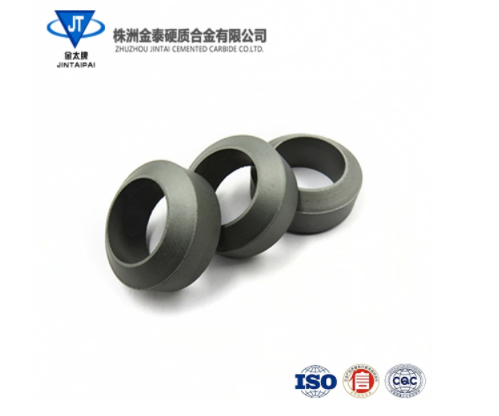Principle of injection molding of cemented carbide mold There is a feeding cavity in the mold, which is connected to the closed injection mold cavity through an in-mold gating system. When working, you need to first add the solid molding material into the feeding cavity and heat it to transform it into a viscous flow state. Then use a special plunger to pressurize the plastic melt in the feeding cavity in the press, so that the melt passes through the mold. The pouring system enters the closed mold cavity and performs flow filling. When the melt fills the mold cavity, and after appropriate pressure holding and solidification, the mold can be opened to remove the product. Currently, injection molding is mainly used for thermoset plastic products.
Compared with compression molding, cemented carbide mold injection molding has plasticized plastic before entering the cavity, so the molding cycle is short, production efficiency is high, plastic parts have high dimensional accuracy, good surface quality, and no flash. Very thin; can mold plastic parts with small inserts, deep side holes and more complex plastic parts; consumes more raw materials; the shrinkage rate of injection molding is greater than the shrinkage rate of compression molding, which will affect the accuracy of plastic parts, but for powder Plastic parts filled with shape fillers have little effect; the structure of the cemented carbide injection mold is more complex than the compression mold, the molding pressure is higher, and the molding operation is more difficult. Injection molding is used only when compression molding cannot meet production requirements. Injection molding is suitable for the molding of thermosetting plastic parts with complex shapes and many inserts.
The main process parameters of cemented carbide mold injection molding include molding pressure, molding temperature and molding cycle, etc. They are all related to factors such as plastic type, mold structure, and product conditions.
(1) Molding pressure refers to the pressure exerted by the press on the melt in the feeding chamber through the pressure column or plunger. Since there is pressure loss when the melt passes through the gating system, the molding pressure during pressure injection is generally 2 to 3 times that during compression molding. The molding pressure of phenolic plastic powder and amino plastic powder is usually 50~80MPa, and the higher pressure can reach 100~200MPa; the plastics with fiber filler are 80~160MPa; the low-pressure packaging plastics such as epoxy resin and silicone are 2~ 10MPa.
(2) The forming temperature of the cemented carbide mold includes the temperature of the material in the feeding chamber and the temperature of the mold itself. In order to ensure that the material has good fluidity, the material temperature must be appropriately lower than the cross-linking temperature by 10~20°C. Since the plastic can obtain part of the friction heat when it passes through the pouring system, the temperature of the feeding chamber and the mold can be lower. The mold temperature of injection molding is usually 15~30℃ lower than that of compression molding, generally 130~190℃.
(3) The injection molding cycle of cemented carbide molds includes feeding time, mold filling time, cross-linking and curing time, demoulding time to take out plastic parts, and mold clearing time. The filling time of injection molding is usually 5 to 50 seconds, while the curing time depends on the type of plastic, the size, shape, wall thickness, preheating conditions and mold structure of the plastic part, and is usually 30 to 180 seconds. Injection molding requires the plastic to have greater fluidity before reaching the hardening temperature, and after reaching the hardening temperature, it must have a faster hardening speed. Commonly used materials for injection molding include: phenolic plastics, melamine, epoxy resin and other plastics.
Post time: Sep-18-2024













